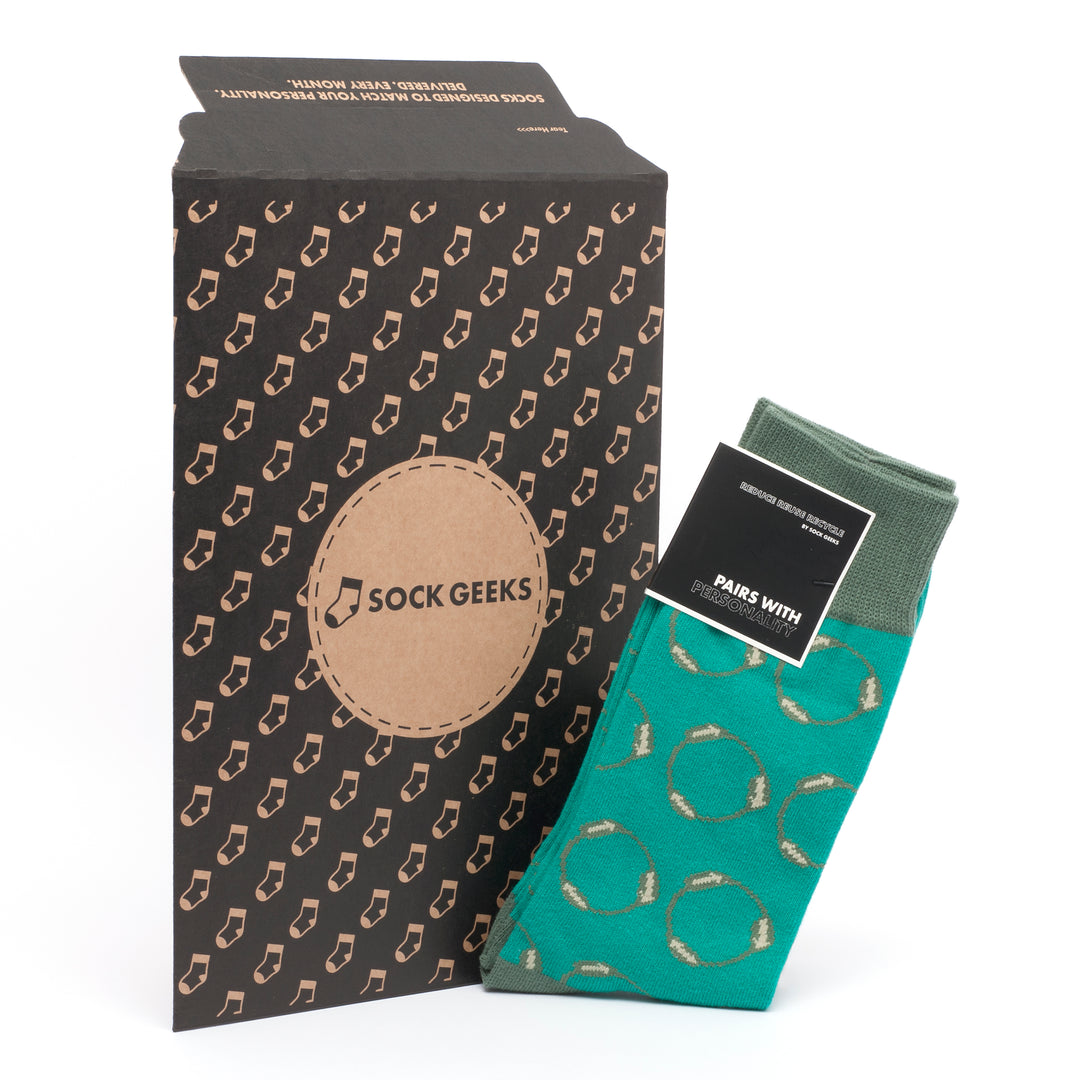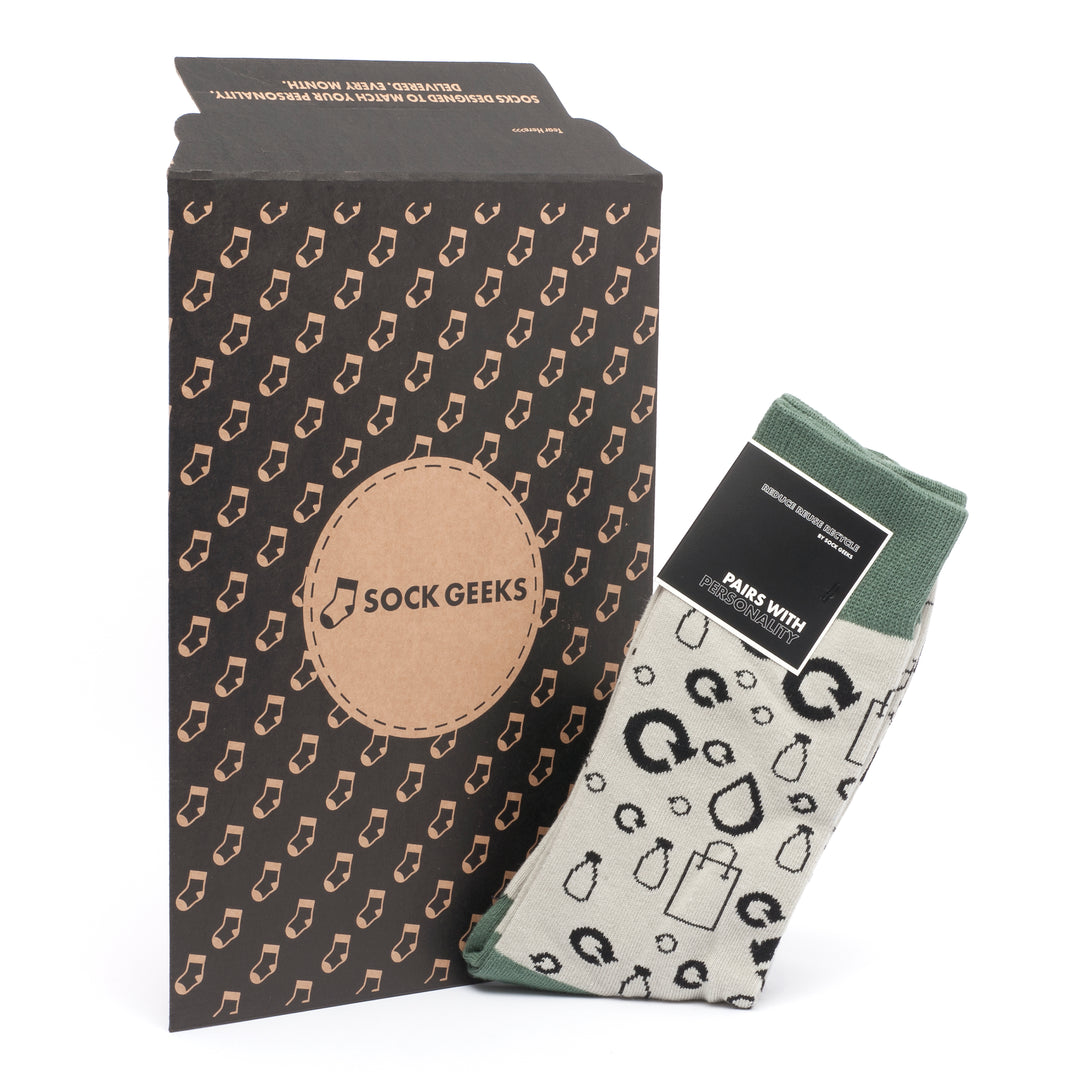Men's Hiking Socks: Your Ultimate Guide
- ### What is the significance of sock length when choosing men's hiking socks?
- What are the benefits of selecting double-layer hiking socks over single-layer options?
- How can I determine the right padding level for my men's hiking socks?
- Should I opt for ankle or full-length men's hiking socks?
- How do I care for my men's hiking socks to ensure longevity?
When it comes to hitting the trails, having the right gear is essential. And for avid hikers, a reliable pair of men's hiking socks can make all the difference. Say goodbye to blisters and discomfort with our top-notch selection of durable and comfortable hiking socks. Designed to provide cushioning and support where you need it most, these socks are a game-changer for outdoor enthusiasts. Whether you're trekking through rugged terrain or exploring nature trails, our men's hiking socks offer unbeatable comfort and performance, ensuring your feet stay happy mile after mile.
Key Takeaways
- Choose the right sock length based on your hiking conditions to prevent blisters and ensure comfort.
- Consider single or double-layer socks depending on the level of cushioning and moisture-wicking you need.
- Select socks with appropriate padding levels to provide comfort and support during long hikes on different terrains.
- Tailor your sock choice to the specific trail conditions to enhance performance and prevent foot fatigue.
- Decide between ankle and full-length socks based on your preference for ankle support and protection.
- Invest in mountaineering socks for extreme conditions to maintain warmth, dryness, and durability.
Importance of Sock Length
Weather Conditions
Choosing the right length for men's hiking socks is crucial, especially when considering weather conditions. For warmer climates, opting for low-cut or ankle-length socks can help keep your feet cool and prevent overheating. On the other hand, in colder environments, selecting mid-calf or knee-high socks provides extra insulation and warmth.
- Low-cut or ankle-length socks for warmer climates
- Mid-calf or knee-high socks for colder environments
Blisters Prevention
One of the key benefits of selecting the appropriate sock length is preventing blisters** during hikes.** Socks that are too short may cause friction between your shoes and skin, leading to painful blisters. By choosing the right length that covers sensitive areas like the heel and ankles, you can reduce the risk of chafing and blisters significantly.
- Proper coverage reduces friction
- Minimises risk of chafing and blisters
Calf Support
For longer hikes that put more strain on your legs, considering calf support through sock length, especially hiking socks, is essential. Opting for mid-calf or knee-high socks provides compression and stability to your calf muscles, reducing fatigue and soreness during extended treks. This added support can enhance your overall comfort and endurance on challenging trails.
- Compression aids muscle stability- Reduces fatigue and soreness
Single vs Double Layer Choices
Benefits of Single Layer Socks
Single-layer socks are typically lighter and provide a more breathable option for hikers. They are perfect for warm weather conditions, preventing overheating and excessive sweating. The thinner material allows for better moisture-wicking, keeping your feet dry and comfortable throughout your hike.
When choosing single-layer socks, consider the level of cushioning you prefer. Some hikers enjoy the minimalist feel that single-layer socks offer, while others may require additional padding for extra comfort on longer treks. Single-layer socks tend to be more form-fitting, reducing the chances of blisters caused by excess fabric rubbing against your skin.
Advantages of Double Layer Socks
Double-layer socks are designed to reduce friction between your foot and the shoe, decreasing the likelihood of blisters forming during hikes. The inner layer stays close to your skin, while the outer layer moves with your shoe, creating a protective barrier that minimises irritation.
For hikers prone to blisters or those embarking on challenging terrains, double-layer socks can be a game-changer. The added thickness provides extra cushioning and support, making them ideal for longer expeditions where foot comfort is paramount.
Choose Based on Personal Comfort Preferences
When deciding between single-layer and double-layer socks, it ultimately boils down to personal preference and specific hiking conditions. Consider factors such as weather, terrain difficulty, and individual comfort needs when making your choice.
If you prioritise breathability and a lightweight feel, opt for single-layer socks. On the other hand, if blister prevention and enhanced cushioning are top priorities, double-layer socks might be the better option for you.
- Single-Layer Socks
- Lightweight
- Breathable
- Moisture-wicking
- Double-Layer Socks
- Friction reduction
- Blisters prevention
- Enhanced cushioning
Remember that experimenting with both types of socks during different hikes can help you determine which style suits you best. Ultimately, the most important factor is ensuring your feet stay comfortable and blister-free throughout your outdoor adventures.
Padding Levels for Comfort
Terrain Selection
When selecting padding levels for hiking socks, it's crucial to consider the terrain's difficulty. For rocky trails, opt for thicker cushioning to provide adequate protection against uneven surfaces.
Cushioning and Breathability
Finding the right balance between cushioning and breathability is essential for overall comfort. Thicker padding offers more comfort but may compromise breathability, while thinner socks provide better airflow but less cushioning.
Impact Protection
For hikers tackling rocky trails, impact protection is key. Look for socks with reinforced padding in the heel and toe areas to absorb shock and reduce the risk of injuries from sharp rocks or rough terrain.
Selecting Socks for Different Trails
Match Thickness
When selecting men's hiking socks, it's crucial to match the sock thickness with the type of trail you plan to tackle. Thicker socks are ideal for rugged terrains with rocky surfaces that require extra cushioning and protection against blisters.
In contrast, thinner socks work well for smoother trails where you need more sensitivity and breathability from your footwear. Consider the terrain's roughness and the level of impact your feet will endure to choose the right thickness for optimal comfort.
Prioritise Moisture-Wicking
Men's hiking socks designed for wet environments should prioritise moisture-wicking properties to keep your feet dry and comfortable throughout the hike. Look for socks made from merino wool or synthetic materials like polyester that effectively wick away sweat and prevent moisture build-up.
Moisture-wicking socks are essential for preventing blisters, hot spots, and fungal infections caused by prolonged exposure to damp conditions. By keeping your feet dry, you enhance overall comfort and reduce the risk of foot-related issues on the trail.
Opt for Quick-Drying Materials
For multi-day hikes or backpacking trips, opt for men's hiking socks made from quick-drying materials such as nylon or polypropylene. These fabrics allow moisture to evaporate quickly, ensuring your socks dry fast overnight so you can start each day with fresh, dry footwear.
Quick-drying socks are a game-changer when traversing varying terrain and unpredictable weather conditions. They enable you to maintain foot hygiene, reduce odour build-up, and minimise discomfort associated with wearing damp socks for extended periods.
Ankle vs Full-Length Socks
Ankle Support
Men's hiking socks play a crucial role in providing necessary foot protection and comfort during outdoor adventures. When it comes to ankle support, ankle socks are ideal for individuals seeking more flexibility and breathability. These socks offer a lightweight option that allows for better movement on various terrains. For hikers tackling rough or uneven trails, ankle socks provide the freedom to manoeuvre without feeling constricted by excessive fabric.
Rough Terrains
For those venturing into rugged landscapes with unpredictable surfaces, the benefits of ankle support cannot be overstated. The snug fit of ankle socks ensures that your feet remain secure within your footwear, reducing the risk of blisters and injuries caused by friction. This is especially advantageous when navigating steep inclines or rocky paths where stability is paramount. By choosing ankle socks, hikers can maintain agility and responsiveness while enjoying enhanced comfort throughout their journey.
Full-Length Socks
On the other hand, full-length men's hiking socks offer additional coverage and warmth compared to their ankle counterparts. Designed to extend beyond the ankles and up the calf, these socks provide insulation against cold weather conditions. If you are planning an expedition in chilly environments or during colder seasons, opt for full-length socks to keep your entire lower leg protected from the elements. The extended length also adds a layer of cushioning that can contribute to overall comfort during long treks.
Added Warmth
The extra material in full-length socks serves as a barrier against low temperatures, ensuring that your feet stay warm and dry throughout your hike. This feature is particularly beneficial when traversing snowy trails or camping in frosty conditions where maintaining body heat is essential for preventing frostbite or discomfort. By prioritising warmth through full-length socks, hikers can focus on enjoying their outdoor experience without being distracted by cold feet.
Personal Comfort
When deciding between ankle and full-length men's hiking socks, personal preference plays a significant role in determining the most suitable option for individual needs. Consider factors such as climate, terrain difficulty, and personal comfort preferences when selecting the right pair of socks for your outdoor excursions. Whether you prioritise flexibility and breathability with ankle socks or opt for added warmth and coverage with full-length ones, choose based on what provides you with the most comfort and protection throughout your hike.
Socks for Walking and Trekking
Arch Support
Look for socks with arch support to ensure comfort and stability during long walks. Proper arch support can prevent fatigue and discomfort, enhancing your overall hiking experience. It helps maintain the natural shape of your foot, reducing strain on your arches.
When selecting socks for walking and trekking, prioritise moisture management to keep your feet dry and comfortable. Moisture-wicking materials are essential to prevent blisters and irritation caused by sweat build-up. Opt for socks that offer quick-drying properties to maintain freshness throughout your adventure.
Cushioning
Consider cushioning in hiking socks for extended trips to provide extra comfort and protection. Cushioned socks help absorb impact, reducing the strain on your feet during long hikes. They offer additional padding in key areas such as the heel and ball of the foot, enhancing shock absorption.
- Proper arch support enhances comfort and stability during long walks.
- Moisture management is crucial for keeping feet dry and preventing blisters.
- Cushioned socks provide extra comfort and protection during extended hiking trips.
Understanding Mountaineering Socks
Importance of Insulation
Men's hiking socks play a crucial role in keeping feet warm and comfortable during challenging mountaineering expeditions. Insulation is a key factor to consider, especially in cold weather conditions. Proper insulation helps retain body heat, preventing frostbite and ensuring optimal performance.
When selecting mountaineering socks, look for those made from merino wool or synthetic materials with excellent insulating properties. These materials trap heat close to the skin while wicking away moisture to keep feet dry and warm. Consider the thickness of the socks; thicker socks provide better insulation but may affect breathability.
Waterproofing for Snowy Conditions
For snowy or wet environments, waterproofing is essential to protect against moisture and maintain warmth. Waterproof mountaineering socks are designed with a breathable membrane that repels water while allowing sweat to escape. This feature is vital in preventing dampness inside the boots, reducing the risk of blisters and cold-related injuries.
When venturing into snowy terrains, opt for mountaineering socks with Gore-Tex or similar waterproof membranes. These socks offer superior protection against snow, slush, and puddles without compromising breathability. Remember that staying dry is key to staying warm and comfortable throughout your expedition.
Reinforced Materials for Durability
Durability is paramount when it comes to mountaineering socks, especially in extreme environments where rough terrain can quickly wear out regular socks. Look for socks with reinforced heel and toe areas, as these are common points of friction and wear. Reinforced materials such as nylon or polyester blends enhance the sock's longevity and resilience.
Investing in durable mountaineering socks not only ensures long-lasting performance but also minimises the risk of developing blisters or discomfort during extended hikes. The reinforced construction provides added cushioning and support, enhancing overall comfort and protection for your feet.
Men's Hiking Sock Sizes Guide
Measure Foot
To ensure the right fit for men's hiking socks, start by accurately measuring your foot size. Use a ruler or measuring tape.
Check Charts
Refer to sizing charts provided by specific brands to determine the appropriate sock size based on your foot measurements.
Try Different Sizes
For optimal comfort, consider trying on different sizes of hiking socks before making a purchase. This helps in finding the perfect fit.
Caring for Your Hiking Socks
Washing Instructions
Follow manufacturer's washing instructions to ensure the longevity of your hiking socks. Most hiking socks are made from technical fabrics that require specific care. Avoid using harsh detergents or bleach, as these can damage the fibres and affect performance.
Air dry your socks instead of using a dryer to maintain their shape and elasticity. High heat from dryers can cause shrinkage and weaken the fabric over time. Lay them flat on a drying rack or hang them up to air dry thoroughly.
Storage Tips
Store your hiking socks in a dry, ventilated area to prevent odours and moisture build-up. Damp environments can encourage bacteria growth and lead to unpleasant smells. Consider using breathable storage containers or mesh bags to keep your socks fresh.
When not in use, avoid leaving your socks crumpled up in a ball. Instead, fold them neatly to maintain their shape and prevent unnecessary stretching. Proper storage not only prolongs the lifespan of your hiking socks but also ensures they are ready for your next outdoor adventure.
Final Remarks
You've now gained a comprehensive understanding of men's hiking socks, from the importance of sock length to selecting the right padding levels for comfort. Whether you're tackling different trails, opting for ankle or full-length socks, or delving into mountaineering, you're equipped with the knowledge to make informed choices. Remember to refer back to the men's hiking sock sizes guide and follow the care tips to ensure longevity.
Make sure to apply this newfound knowledge when shopping for your next pair of men's hiking socks. Your comfort and performance on the trails depend on it!
Frequently Asked Questions
### What is the significance of sock length when choosing men's hiking socks?
The sock length impacts protection and comfort. Shorter socks offer breathability, while full-length ones protect against debris and blisters.
What are the benefits of selecting double-layer hiking socks over single-layer options?
Double-layer socks provide added cushioning, reduce friction, prevent blisters, and enhance durability for extended hikes.
How can I determine the right padding level for my men's hiking socks?
Choose padding based on trail difficulty; light padding suffices for easy trails, while extra padding offers comfort on rugged terrain.
Should I opt for ankle or full-length men's hiking socks?
Ankle socks provide breathability and flexibility, ideal for shorter hikes. Full-length socks offer added protection and warmth for longer treks.
How do I care for my men's hiking socks to ensure longevity?
Machine wash with a gentle cycle in cold water, avoid bleach or fabric softener, air dry or tumble dry on low heat to maintain quality.




















Leave a comment